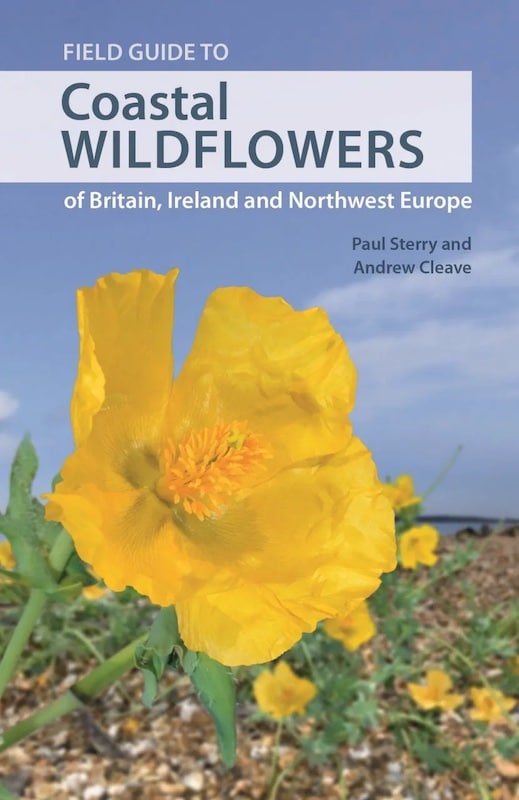| Paul Sterry & Andrew Cleave | Wild Nature Press | 2022 | Paperback | 352 Pages | Colour Photographs | ISBN: 9780691218151 | £16.99p |

The Publisher’s View:
The rugged and beautiful coastal regions of Britain and Ireland are among the crowning glories of these islands. Few visitors can fail to marvel at the stunning sight of Cornwall’s clifftops resplendent with flowering Thrift, or be struck by the resilience of plants that thrive on the inhospitable shingle beaches of Dungeness on the coast of Kent. This field guide covers more than 600 species of wildflowers and other coastal flora found in Britain and Ireland, and coastal mainland Northwest Europe. Detailed species accounts describe the wildflowers, grasses, sedges and rushes that occur on the coast or in abundance within sight of the sea. Stunningly illustrated throughout, this comprehensive, user-friendly guide also covers trees and shrubs, a range of other groups from mosses to seaweeds, and more broadly, the natural history of coastal habitats.
– Covers more than 600 species of flowering plants
– Features over 1,500 spectacular colour photos
– Describes other groups such as ferns, mosses, liverworts, lichens, fungi and seaweeds
– Provides colour distribution maps for Britain and Ireland
The Authors:
Paul Sterry is a bestselling wildlife author and photographer whose many books include HarperCollins Complete North American Wildlife and Birds of Eastern North America (Princeton).
Andrew Cleave is a highly regarded educator and environmentalist whose many books include A Naturalist’s Guide to the Trees of Britain and Northern Europe and Curious Creatures.
Fatbirder View:
We birders come full circle, starting out as kids fascinated with the natural world we narrow our focus on birds and gradually reintroduce all manner of beasts, fungi plants and all. In my dotage I spend more time on my tiny garden spotting bee-flies and everything that creeps on the land including the ever heart-lifting blooms.
Living so far southeast I’m practically French most of my birding is along my stretch of coast and had begun to notice the uniqueness of the flora and, like most birders, hate it when I can’t put a name to what I see. So this is a timely publication for me.
Normally I prefer a drawn illustration to a photograph, but this book does what photographic bird guides could learn from, namely add to each photographic portrait fine details of leaf or seeds. They are probably photos too, but ape hundreds of years of scientific illustration in a very pleasing way.
This, for me, takes this from another pretty book, to one I can really use to identify what I see.
Excellent!
Fatbirder
